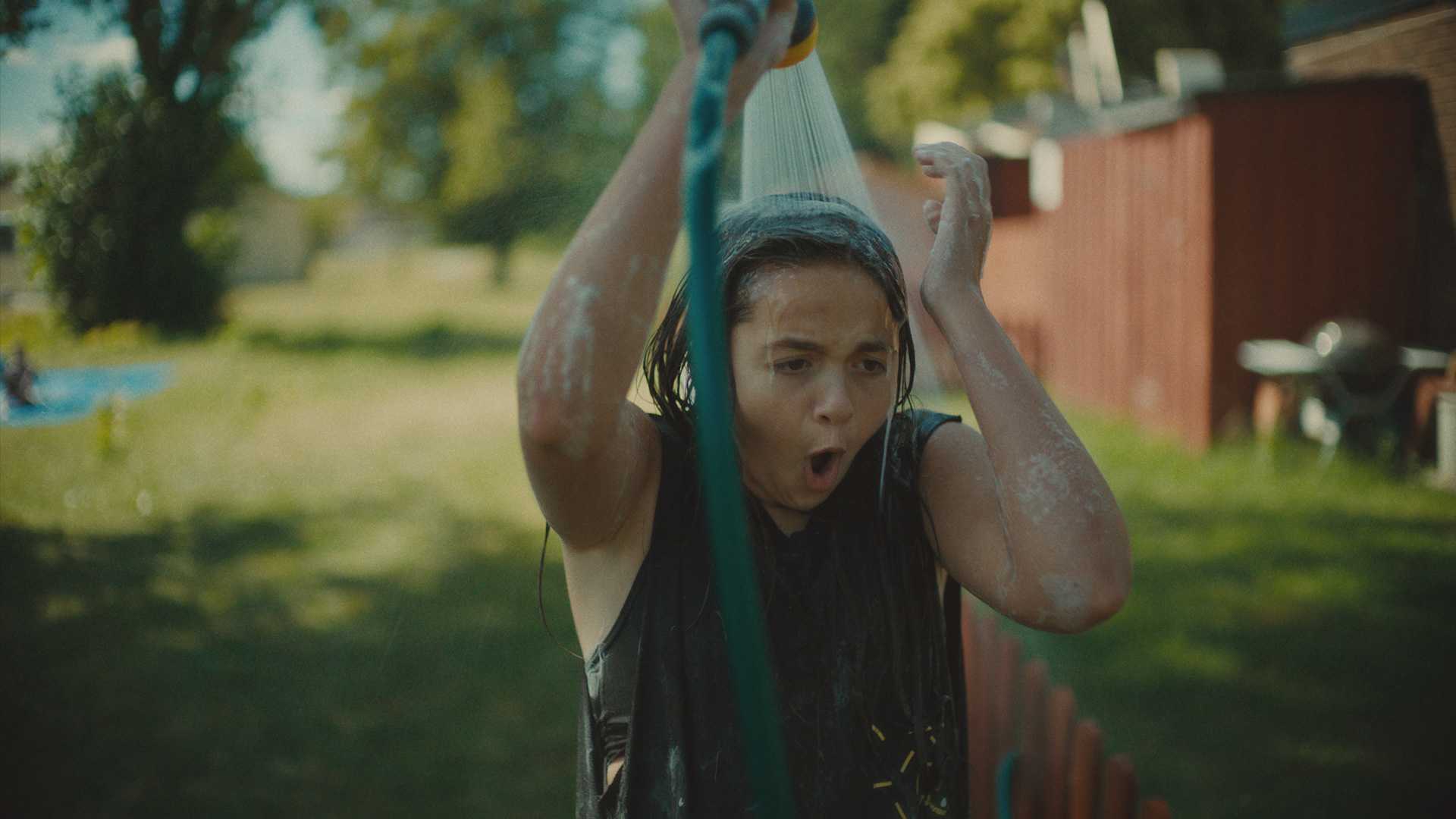review
In a working-class suburb of Sweden, a chaotic household of three sisters comes alive the second they wake up. Sixteen-year-old Laura (Bianca Delbravo), who has taken up the matriarchal mantle, shoves awake seven-year-old Steffi (Safira Mossberg) so she can strip the bed. Meanwhile, 12-year-old Mira (Dilvin Asaad) haphazardly spills cereal as she prepares breakfast. It’s an appropriately tumultuous introduction to this lovable but mischievous trio who have created their own sanctuary turned playground in the absence of their parents. Their playful existence, however, is about to shatter with a call from social services requesting to meet with their mother, who hasn’t been home for months.
Swedish director Mika Gustafson’s kaleidoscopic sophomore feature is an unabashed celebration of self-sufficient sisterhood. A coming-of-age portrait rendered through an anarchic lens, Paradise Is Burning explores the bond of sisterhood with lived-in clarity. The three misfits are fiercely protective of one another, just trying to get by on their own, but it is Laura leading the charge. With forearms covered in tattoos but deciding to straighten her hair with an iron, she straddles composed maturity and a lingering, childish playfulness.
Though the world of cinematographer Sine Vadstrup Brooker is bright and colourful, there’s a melancholia that haunts Laura; the visiting social workers, and the fear of being separated from her sisters and thrown into the foster care system, are petrifying. The exuberance of her youth is buried by worry as she presses ahead alone to keep her sisters together.

Laura does manage to keep herself distracted by breaking into homes with her sisters and friends when the occupants are away, splashing around in swimming pools and reading the homeowner’s diary as if it’s a gossip column. It’s a fun pastime to relax from their more desperate criminal activity—which includes Steffi splattering blood from a packet of red meat over her face as a distraction, while her older sisters run out of a grocery with a trolly of stolen snacks.
It is while running away from one house that Laura has a chance encounter with a woman named Hanna (Ida Engvoll), who opens up new possibilities. Hanna isn’t like the other adults Laura swindles; she welcomes Laura into her home where a baby dummy and infant equipment are lying around but with no sign of a baby. Laura notices but chooses not to question. Similarly, Hanna doesn’t prod about Laura’s life, knowing she’s up to something but is more intrigued by her breaking-and-entering pastime.
The seismic bond of sisterhood is such a specific experience that Gustafson captures with familiar angst and an innate protectiveness.
They become an unlikely duo—Laura’s hazelnut eyes and brown hair contrast Hanna’s piercing pale blue eyes and blonde hair, and yet they are so alike. There’s a youthful spirit and an unconventional relationship to motherhood that unites them. Hanna takes Laura seriously. And an unspoken bond forged between them makes Gustafson’s film all the more dynamic in its mature but sensitive chronicling of adolescence.
Though Gustafson is focused on Laura, her charming younger siblings also get moments to shine—arriving with animated giggles and lifting Paradise Is Burning’s mood. Especially Steffi, the youngest, who has a habit of befriending stray dogs and is in training to be as fiercely loyal as her older sisters. Meanwhile, the middle sister, Mira, is encountering the early stages of puberty, having her first period and coming to terms with her changing body. Bracing for the transition of teenagehood is no easy task, from the mulberry stain of red wine to the weight of building responsibility. Mia wrestles with being in the middle of her sisters but tries to find her own path.

The seismic bond of sisterhood is such a specific experience that Gustafson captures with familiar angst and an innate protectiveness. At times, the director’s approach breaches documentary stylings with an observational perspective that watches these adolescent girls without judgement. Dreamy visuals accompany the harsh narrative realities of Paradise Is Burning; even in its bleakest moments, the sun still manages to shine through. That same warmth is achieved as the camera locates their height measurements on the door frame and the peeling paint around doorways, a homely comfort amid their increasingly stressful parental responsibilities.
Shot from a child’s perspective, this trio don’t appear small in the frame, but it’s certainly jarring when an adult appears. Though Gustafson hones in her focus on the social services drama, this is quickly sidelined when Steffi’s wiggly tooth becomes the most important dilemma of the day. The film is indebted to its young actors and their captivating performances that create a visceral world of their own, away from adults’ input.
Though there are pockets of sadness, the film is inherently fun, and that liveliness also extends to the buoyant soundtrack. From a vinyl of “Oh Susie” by Secret Service as Laura and Hanna dance around a flat, to their neighbours performing a gruff rendition of Fever Ray’s “Keep the Streets Empty for Me” at karaoke, the soundtrack fluctuates between euphoric coming-of-age anthems and mellow melodies. Such is the balance achieved in Paradise Is Burning; full of personality and heart without sacrificing its inherent seriousness, Gustafson’s film is a sure portrait of adolescence that packs a punch.
Curated by humans, not algorithms.
© 2024 A Good Movie to Watch. Altona Studio, LLC, all rights reserved.